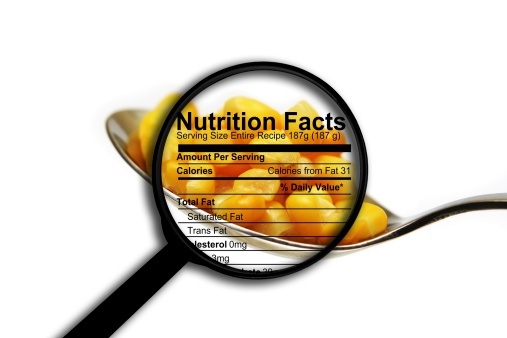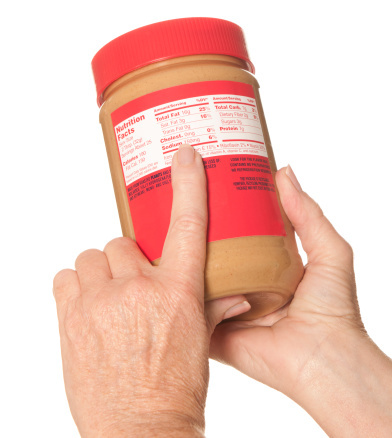While proper nutrition is an essential part of helping your aging loved one stay healthy, getting seniors to make the right food choices can be a challenge. Factor in misleading packaging geared to misrepresent a product's contents, and food labels become even more important. Caregivers can help older loved ones meet their daily nutritional needs -- while also acknowledging dietary restrictions -- by understanding and using Nutrition Facts labels. This is especially important when caring for someone with diabetes. Here's what you need to know. 
Nutrition Facts are a caregiver's best friend.
Serving Size Matters
The Food and Drug Administration (FDA) suggests that serving size and number of servings are the first place to look when inspecting a product's Nutrition Facts label. After all, the size of the package itself is less significant than how many servings are contained in the food package.
For example, if there are three servings in a bag of potato chips, but you eat the entire bag in one sitting you've had three times the serving...and triple the calories and nutrients.
Calories Count
Because human metabolism slows with age, seniors need to consume fewer calories. According to the NIH, a moderately active woman over the age of 50 should consume 1,800 calories daily while a moderately active man over the age of 50 should consume been 2,200 and 2,400 calories.
However, even though their caloric intake requirements are fewer, many seniors still don't get the calories they need. As weight loss can lead to health complications, it's particularly important to ensure that seniors are consuming enough. By consulting the calories (and calories from fat) -- remembering to factor in the number of servings -- you can help make sure your loved one is eating enough.
The Skinny on Nutrients
The FDA strives to help people meet their dietary objectives by introducing the Nutrition Facts label designed to simplify the process and to highlight specific concerns.
For example, many Americans are at risk of consuming too much fat, saturated fat, trans fat, cholesterol, and sodium. Food labels highlight these contents to help consumers keep their numbers within the optimal range. Conversely, many people don't get nearly enough beneficial fiber, vitamin A, vitamin C, calcium, and iron in their daily diets. Food labels are a valuable tool in helping to limit less healthy nutrients and increase healthier ones.
But how do you make sense of these numbers? The percent daily value (%DV) plays an important role. Based on a 2,000 calorie daily diet, the Daily Value recommendations can help you determine if foods are low or high in particular nutrients. 
No nuts? No problem.
A Word On Sugar
Many seniors watch their sugar intake because of blood sugar concerns, but sugar doesn't appear with a daily reference value on the Nutrition Facts label. This is because there are no specific FDA recommendations regarding sugar consumption. If your aging loved one is on a low-sugar diet, check labels for "added sugars," including corn syrup, high-fructose corn syrup, fruit juice concentrate, maltose, dextrose, sucrose, honey, and maple syrup. If any of these ingredients appear toward the top of the list of ingredients, stay away.
Meanwhile, if your senior suffers from food allergies, a quick scan of the ingredients can help you determine if your loved one is at risk. Typically, the most common allergies, such as wheat, milk, peanuts, eggs and others, appear in bold, which takes the guesswork out of the equation and keeps your loved one safe.
While eating well is essential at all ages, seniors have different nutritional needs than the rest of the population. Food labels can play an active role in helping seniors look and feel great - yet they can be complicated and confusing so it is important that you know how to read them properly. For more information on the role nutrition can play in keeping your aging loved one healthy and strong, and what you can do to help them, watch Understanding Food Labels for Good Health! presented by registered dietician Felicita Bernier, with the San Antonio Food Bank.

